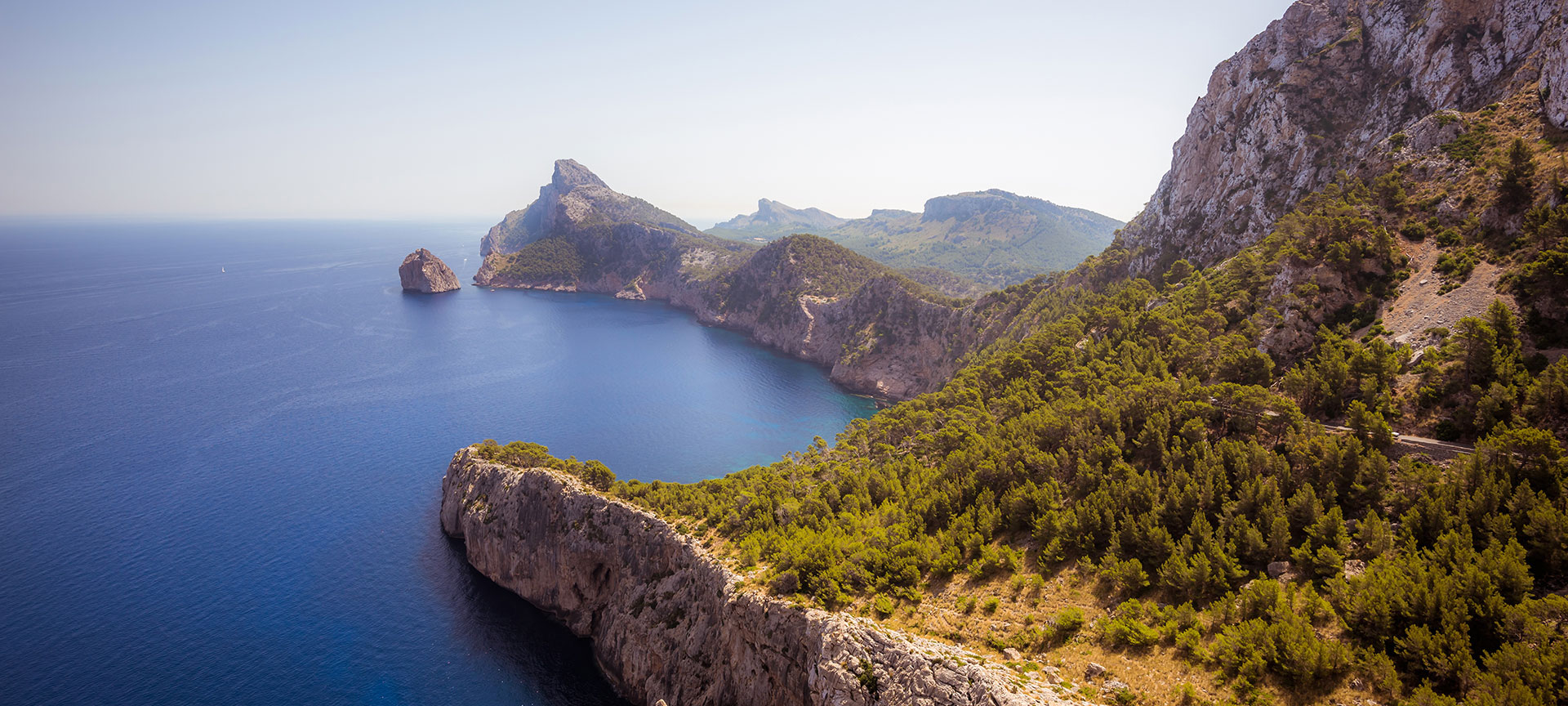
Cultural Landscape of the Sierra de Tramontana

The Tramontana mountain range runs parallel to the northwest coast of the island of Mallorca. It was awarded the World Heritage designation by the UNESCO for its unique agricultural landscape, featuring hydraulic systems of medieval origin.
From the municipality of Andratx to Cape Formentor, we find this succession of steep mountains and fertile valleys, connected to each other by ravines. In addition to the beauty of a landscape that captivated artists such as Chopin, Unamuno, Anglada Camarasa and Camilo José Cela, the Sierra de Tramontana is also the house of Mallorca's main hydrological reserve. Its stepped slopes and terraced crop-growing plots are an exceptional example of the use of natural resources according to the resources and knowledge of each age. The water management and distribution network that exists between the different plots combines systems of Arab origin with other elements such as mills and unmortared stone structures (bridges, walls, roads, etc.).
Cultural Landscape of the Sierra de Tramontana
Centre Serra Tramuntana (Finca Raixa)
Carretera Ma-11 de Palma a Sóller, km 12,2
07110 Bunyola, Majorca (Balearic Islands)
Majorca (Balearic Islands):
- Alaró
- Andratx
- Banyalbufar
- Bunyola
- Calvià
- Campanet
- Deyá
- Escorca
- Esporles
- Estellencs
- Fornalutx
- Lloseta
- Mancor de la Vall
- Palma
- Pollença
- Puigpunyent
- Santa Maria del Camí
- Selva
- Sóller
- Valldemosa
Activa JS
What you need to know
-
Cultural information
The Sierra de Tramontana also has towns and monuments of cultural interest. Among other towns, the historic sites of Deià and Estellencs or the municipalities of Sóller, Valdemossa, Andratx and Pollença stand out. The Cartuja de Valdemossa or the Son Marroig gardens are some of the must-see spots. Moreover, along the coast there are numerous historic lighthouses and towers, such as the Formentor lighthouse and the Sa Creu lighthouse (in Puerto de Sóller) or the Picada tower, the Sa Calobra, Sa Pedrissa and Sa Mola towers.
-
Environmental information
The main mountains of the mountain range are Puig Major (1,445 metres) and Puig de Massanella (1,367 metres). With regard to flora, typical Mediterranean crops and vegetation stand out, such as olive trees and holm oaks. Some of the main wildlife bird species are the black vulture and the osprey.
-
Information for visits
You can travel to the Sierra de Tramontana on a heritage train from the city of Palma: The Sóller railway.The “Dry Stone” hiking trail network runs from west to east along the mountain range, crossing different points of interest and offerings routes that have been especially designed for families.Throughout the mountain range there are several natural viewpoints that offer fabulous views, such as Ses Tres Creus (Sóller).
Travel plans for inspiring you





